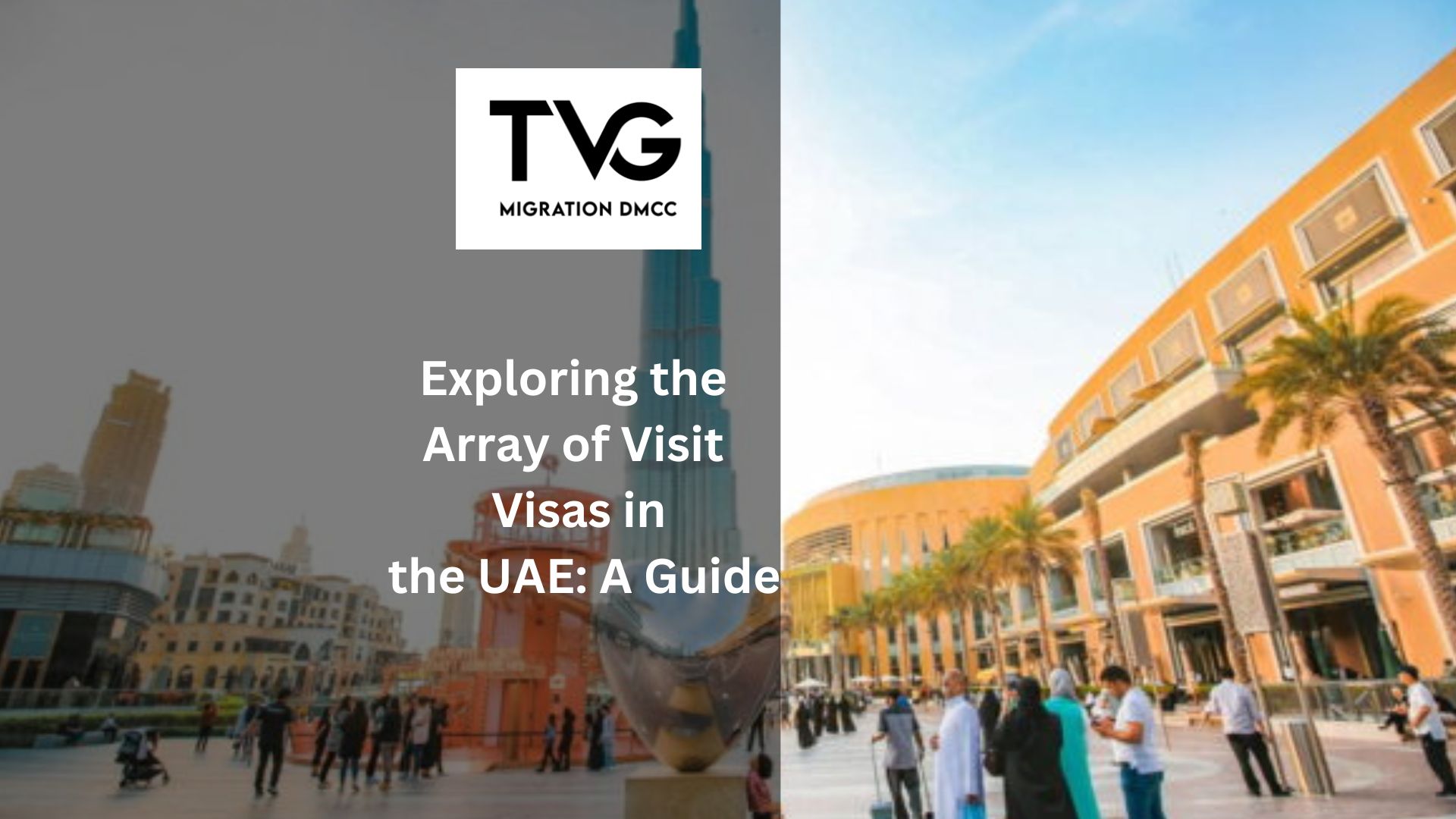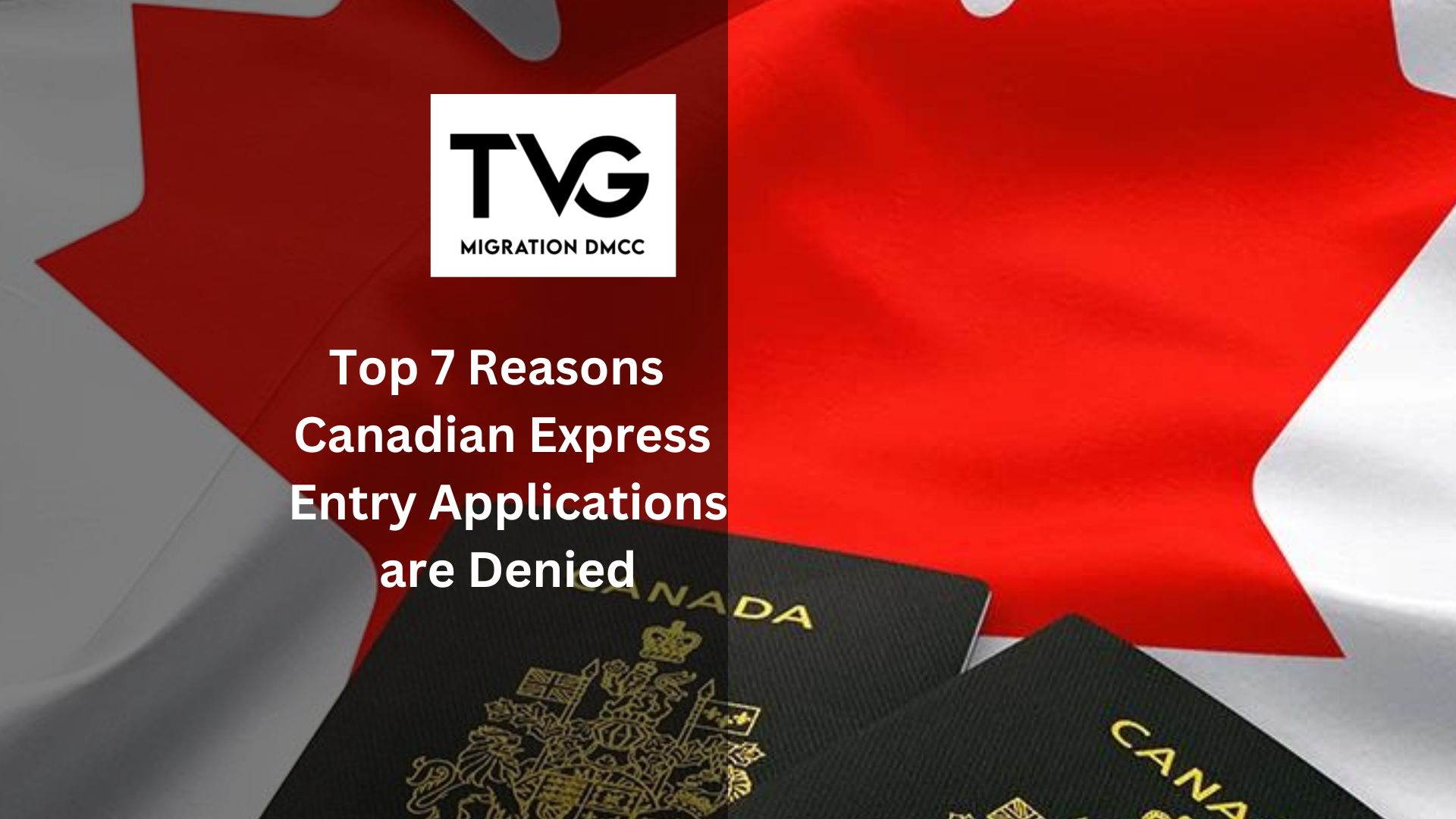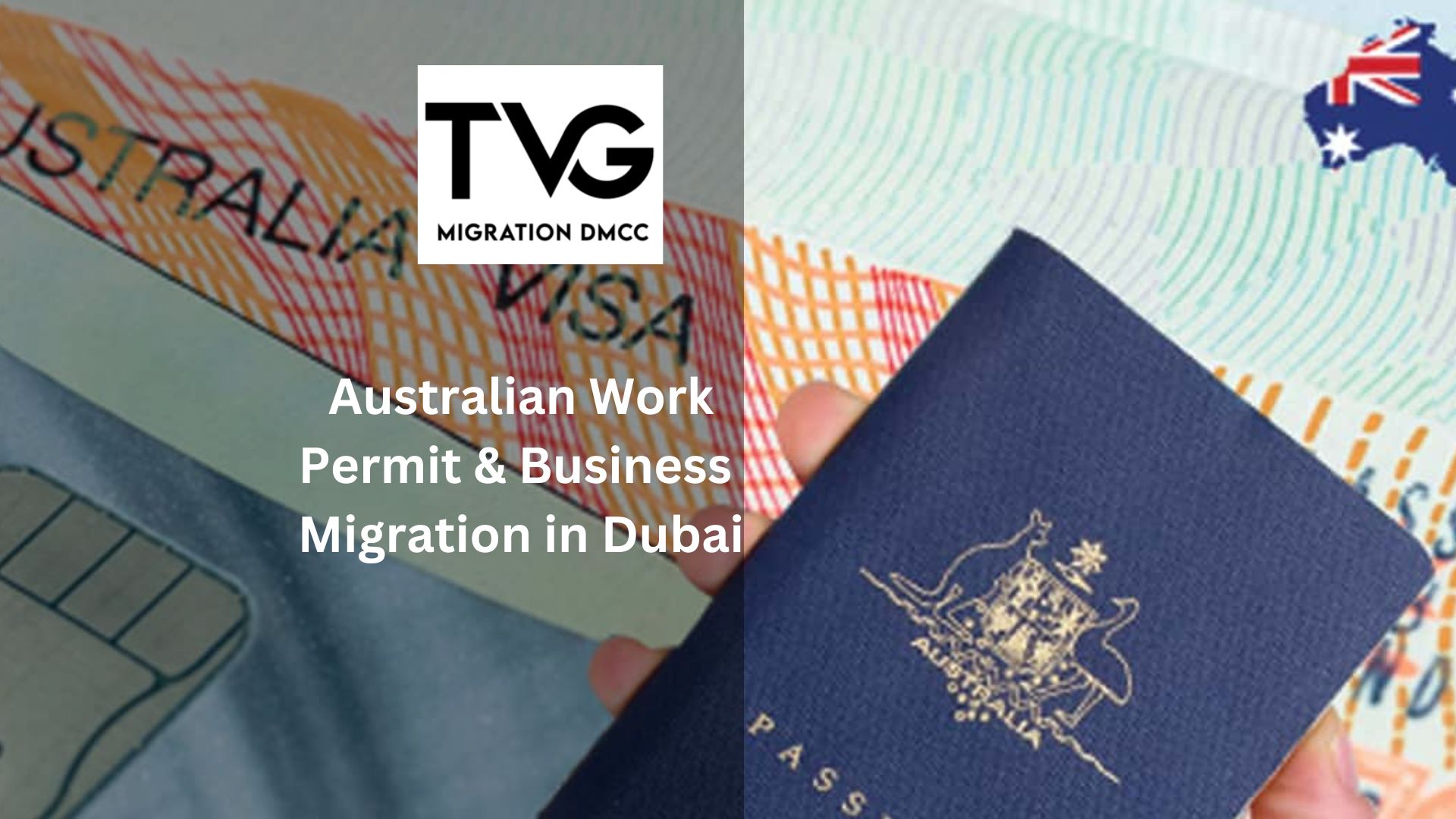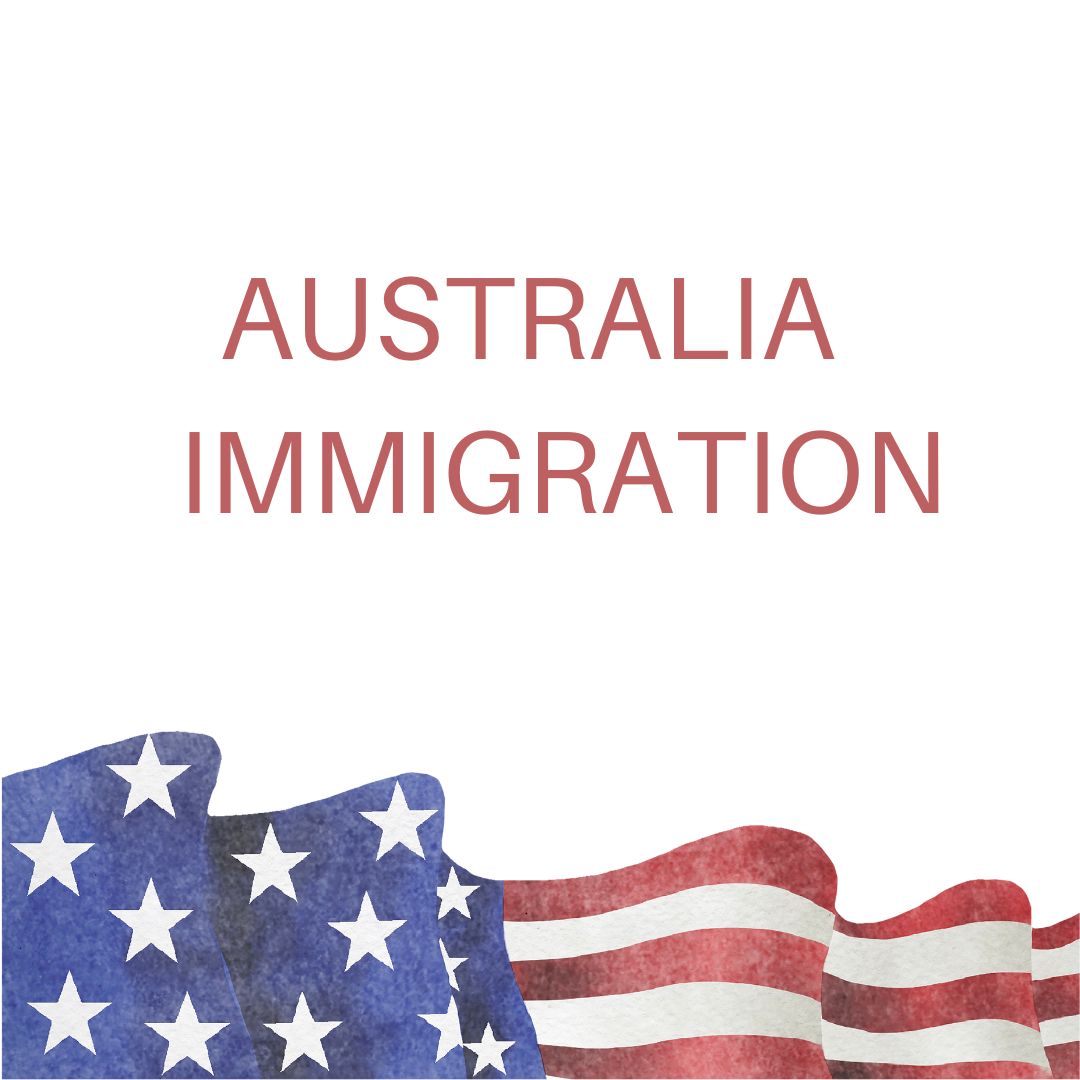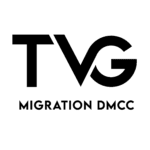Are you considering a move from Dubai to Canada? With its welcoming immigration policies, high standard of living, and diverse population, it’s no surprise that Canada is a popular destination for those looking to migrate from Dubai. In this blog, we’ll explore why it is worth moving to canada from Dubai. Canada consistently ranks high in standard of living among the world’s top countries for quality of life. From affordable healthcare to excellent public education, Canada offers its residents a high standard of living. The country also has a strong economy, with a low unemployment rate and many opportunities for career growth. Welcoming immigration policies Canada is known for its welcoming immigration policies, making it a popular destination for those looking to migrate from Dubai. The country has various immigration programs, including the Express Entry is a programme that enables qualified individuals to apply for permanent residency. Additionally, Canada has programs that cater to entrepreneurs and investors looking to start a business or invest in the country. Cultural diversity Canada is known for its cultural diversity, with residents from around the world calling it home. The country has a reputation for being tolerant and accepting of different cultures and religions, making it a desirable location for people seeking to experience new cultures and meet new people. Natural Beauty Canada is known for its natural beauty, from the Rocky Mountains to its stunning coastline. The country offers numerous outdoor activities, including hiking, skiing, and camping. Canada is the perfect destination for you if you’re a nature lover. Access to quality education Canada has a world-renowned education system, offering residents access to quality education from primary school to university. The country has a variety of universities and colleges, including some of the world’s top-ranked institutions. In conclusion, migrate to Canada from Dubai is worth considering if you’re looking for a high standard of living, welcoming immigration policies, cultural diversity, natural beauty, and access to quality education. Canada offers a safe and welcoming environment for those looking to start a new life and build a brighter future.
Home – Best Canada & Australia Immigration Consultant in Dubai
Author: TVG
Exploring the Array of Visit Visas in the UAE: A Guide
The United Arab Emirates (UAE) stands as a vibrant and captivating destination that attracts visitors from all around the world. Whether you’re planning a leisurely vacation, visiting family and friends, or exploring business opportunities, understanding the different types of visit visas available in the UAE is essential. This comprehensive guide aims to provide detailed insights into the various visit visa categories, their specific requirements, and the privileges they offer. By familiarising yourself with these visit visas, you can ensure a smooth and hassle-free entry into the UAE, allowing you to make the most of your visit. Tourist Visa: The Tourist Visa is a popular choice for individuals planning a short-term visit to the UAE for tourism or leisure purposes. Key aspects include: a. Duration and validity: Explore the different durations and validity periods available for Tourist Visas. b. Entry options: Learn about single-entry and multiple-entry Tourist Visas and their respective advantages. c. Extensions: Understand the possibility of extending your Tourist Visa while in the UAE. Visit Visa for Family and Relatives: This category allows individuals to visit their family members and relatives residing in the UAE. Topics covered include: a. Eligibility criteria: Understand the relationship requirements and necessary documentation for this visa category. b. Sponsorship: Learn about the sponsorship process and responsibilities for Visit Visas for family and relatives. c. Duration and extensions: Explore the duration of stay allowed and the possibility of extending the Visit Visa. Visit Visa for Business Purposes: The Visit Visa for Business Purposes enables individuals to visit the UAE for meetings, conferences, or conducting business activities. Key points include: a. Invitation letters: Understand the importance of invitation letters and their role in obtaining the Visit Visa for business purposes. b. Business activities: Explore the range of permissible business activities under this visa category. c. Duration and extensions: Learn about the duration of stay allowed and the possibility of extending the Visit Visa for business purposes. Medical Treatment Visa: The Medical Treatment Visa caters to individuals seeking specialised medical treatment in the UAE. Topics covered include: a. Medical documentation: Understand the importance of providing comprehensive medical documentation to support your visa application. b. Accredited medical facilities: Explore the requirements related to receiving treatment from accredited medical facilities in the UAE. c. Duration and extensions: Learn about the duration of stay allowed and the possibility of extending the Medical Treatment Visa. As a foreigner planning to visit the UAE, understanding the different types of visit visas available is crucial to ensure a smooth and enjoyable experience. By familiarising yourself with the specific requirements, privileges, and limitations of each visit visa category, you can make informed decisions and properly prepare for your visit to the UAE. Remember to consult with the relevant authorities or seek professional assistance to ensure a seamless visa application process.
Building Your Career Abroad: Understanding the Work Permit Categories in Canada
Work permits play a vital role for UAE residents aspiring to work in Canada, opening up a world of employment opportunities and professional growth. Canada’s robust economy, diverse industries, and welcoming immigration policies make it an attractive destination for skilled professionals seeking international work experience. In this comprehensive guide, we will delve into the different work permit categories available in Canada, providing valuable insights into their requirements, eligibility criteria, and benefits. Whether you are a seasoned professional, recent graduate, or ambitious entrepreneur, understanding the various work permit options will empower you to take advantage of Canada’s thriving job market and realise your career aspirations. Temporary Foreign Worker Program (TFWP): The Temporary Foreign Worker Program is designed for skilled workers who have received a job offer from a Canadian employer. Key aspects include: a. Labour Market Impact Assessment (LMIA): Understand the importance of LMIA and how it affects the eligibility for the TFWP. b. High-demand occupations: Explore the in-demand occupations in Canada and how they relate to work permit applications. c. Work permit duration: Learn about the duration of work permits under the TFWP and the possibility of extensions. International Mobility Program (IMP): The International Mobility Program encompasses various work permit categories that do not require an LMIA. This includes: a. Intra-Company Transfers: Explore opportunities for employees of multinational companies to transfer to a Canadian branch or affiliate. b. NAFTA/USMCA Professionals: Understand the work permit options available to citizens of the United States and Mexico under the North American Free Trade Agreement (NAFTA) or the United States-Mexico-Canada Agreement (USMCA). c. Global Talent Stream: Discover the fast-track option for certain high-demand occupations through the Global Talent Stream program. Post-Graduation Work Permit (PGWP): Students who have completed a program of study at a designated Canadian educational institution may be eligible for the Post-Graduation Work Permit. Key points include: a. Eligibility criteria: Understand the requirements, such as program duration and type of institution, to be eligible for the PGWP. b. Work permit duration: Learn about the duration of the PGWP, which allows graduates to gain Canadian work experience. c. Pathway to permanent residency: Explore how the PGWP can serve as a stepping stone towards permanent residency in Canada. Start-up Visa Program: Entrepreneurs with an innovative business idea and support from a designated organisation can apply for the Start-up Visa Program. Topics covered include: a. Eligibility requirements: Understand the criteria for qualifying under the Start-up Visa Program, including the support from designated organisations. b. Business plan and investment: Learn about the importance of a comprehensive business plan and the required investment for this program. c. Permanent residency pathway: Discover how the Start-up Visa Program offers a pathway to permanent residency in Canada. Provincial Nominee Programs (PNPs): Provincial Nominee Programs allow provinces and territories in Canada to nominate individuals with specific skills and experience. Key aspects include: a. PNP categories: Explore the different PNPs across Canada and their respective criteria and streams. b. Employment offers: Understand the role of employment offers in the PNP process and their impact on work permits. c. Provincial pathways to permanent residency: Learn how PNPs can lead to permanent residency opportunities in specific provinces. Canada offers a diverse range of work permit categories, catering to the needs and aspirations of UAE residents seeking employment, education, or entrepreneurial opportunities. By familiarising yourself with the different work permit programs, their requirements, and pathways to permanent residency, you can take the necessary steps to pursue your Canadian dream. However, the immigration process can be complex, and professional guidance
Work Permits in Canada: What You Need to Know About the New Policy in 2023
Canada has long been an attractive destination for individuals seeking employment opportunities and a high standard of living. The country welcomes skilled workers worldwide and offers various pathways to obtain a work permit. In 2023, Canada introduced a new work permit policy, streamlining the application process and aiming to reduce processing times. In this article, we will explore the critical aspects of the new policy, including how to get a work permit in Canada and how long it takes to acquire one. . Obtaining a Work Permit in Canada: 1. Determine your eligibility: Before applying for a work permit, it is crucial to determine if you meet the eligibility criteria. Generally, applicants must have a job offer from a Canadian employer, possess the necessary qualifications and skills, and meet health and security requirements. 2. Labor Market Impact Assessment (LMIA): In some cases, a Canadian employer may need to obtain an LMIA, demonstrating that hiring a foreign worker will not negatively affect the local labour market. However, certain job categories and specific situations are exempt from this requirement. 3. Temporary Foreign Worker Program (TFWP): If an LMIA is required, the employer must apply for it through the TFWP. The program ensures that Canadian citizens and permanent residents have access to available job opportunities before they are offered to foreign workers. 4. Work permit application: Once the employer has obtained a positive LMIA or if an LMIA exemption applies, the foreign worker can proceed with the work permit application. The application should be submitted to Immigration, Refugees and Citizenship Canada (IRCC) online or through a visa application centre. 5. Supporting documents: Along with the application form, applicants must provide supporting documents, such as a valid passport, proof of job offer, educational credentials, and language proficiency test results, if required. Work Permit Processing Time in Canada: The processing times for work permits in Canada can vary depending on various factors, including the type of work permit, the applicant’s country of residence, and the time of year. Generally, the following estimates can give you an idea of the processing times: 1. Global Skills Strategy: Under this program, work permit applications for highly skilled workers may be processed within two weeks or even faster in some instances. 2. LMIA-based work permits: The processing time for LMIA-based work permits can range from several weeks to several months, depending on the complexity of the case and the regional workload. 3. LMIA-exempt work permits: Work permit applications that fall under LMIA exemptions, such as those for international agreements, intra-company transferees, or individuals with open work permits for spouses, can have relatively shorter processing times. It’s crucial to remember that these projections are general guidelines, and individual circumstances may cause processing times to vary. Canada’s new work permit policy in 2023 aims to make it easier for skilled workers to enter the country while ensuring the protection of the domestic labour market. By understanding the eligibility requirements, obtaining the necessary documentation, and following the application process, individuals can increase their chances of securing a work permit in Canada. While processing times for work permits can vary, the new policy intends to streamline the process and provide efficient outcomes for applicants. As always, staying updated with the latest information from official sources, such as the IRCC website, is recommended for the most accurate and current details.
Top 7 Reasons Canadian Express Entry Applications are Denied
Canada’s Express Entry system is a popular route for skilled workers looking to obtain permanent residency (PR) in the country. This system uses a points-based system to evaluate and select candidates based on their skills, education, work experience, and other factors. While the process may seem straightforward, it’s important to note that many applications are denied each year for various reasons. In this blog, we’ll explore the top seven reasons why Canadian Express Entry applications are denied. Incomplete Application One of the most common reasons for Express Entry application denial is an incomplete application. This can include missing documents, incorrect information, or failure to provide required information. It’s important to carefully review the application requirements and provide all necessary information and documentation to avoid delays or denial. Language Proficiency Language proficiency is a critical factor in the Express Entry system. Applicants are required to demonstrate proficiency in English or French through a recognized language test. If an applicant fails to meet the language proficiency requirements, their application may be denied. Education Credential Assessment Another common reason for Express Entry application denial is a failure to provide an education credential assessment (ECA). This assessment is required to verify an applicant’s foreign education credentials and determine their Canadian equivalency. Without an ECA, an applicant’s education credentials may not be recognized, and their application may be denied. Ineligibility for Federal Skilled Worker Program The Federal Skilled Worker Program (FSWP) is a popular route for skilled workers to obtain PR through Express Entry. However, applicants must meet specific eligibility requirements, including a minimum of one year of skilled work experience and a certain level of education. If an applicant does not meet the eligibility requirements, their application may be denied. Ineligibility for Provincial Nominee Program Provincial Nominee Programs (PNPs) are another popular route for skilled workers to obtain PR through Express Entry. However, each province has its own eligibility requirements, and applicants must meet both the federal and provincial criteria to be selected. If an applicant does not meet the eligibility requirements for a specific PNP, their application may be denied. Criminal Record Applicants with a criminal record may be deemed inadmissible to Canada and denied entry. The Canadian government takes criminality seriously and may deny an application if an applicant has committed certain types of crimes, including those related to violence, theft, or drug trafficking. Medical Inadmissibility Medical inadmissibility is another reason why an Express Entry application may be denied. Applicants are required to undergo a medical exam to ensure they are not a danger to public health and to confirm they do not have any medical conditions that could pose a burden on the Canadian healthcare system. If an applicant is deemed medically inadmissible, their application may be denied. While the Express Entry system is a popular route for skilled workers to obtain PR in Canada, many applications are denied each year. It’s important to carefully review the application requirements and eligibility criteria to avoid common mistakes and ensure a successful application. If you’re considering applying for permanent residency in Canada through the Express Entry system, it’s important to ensure your application is complete, accurate, and meets all eligibility requirements. The top seven reasons for Express Entry application denial highlighted in this blog can be avoided by working with an experienced immigration consultant who can guide you through the process and ensure your application is strong.
How to easily get Australian Work Permit & Business Migration in Dubai: A Guide
If you’re an entrepreneur or skilled worker seeking to start a new business or work in Australia, you might be wondering about the process of obtaining an Australian Work Permit and Business Migration. Fortunately, the process isn’t as daunting as you might think. In this guide, we’ll discuss the rules and process of obtaining an Australian Work Permit and Business Migration in Dubai, and how to make the process easier with the help of an immigration consultancy firm. Understanding the Australian Work Permit Before we dive into the details of the process, let’s first clarify what an Australian Work Permit is. A Work Permit, also known as a Temporary Skill Shortage (TSS) visa, is a temporary visa that allows skilled workers to work in Australia for up to four years. This visa is issued based on the sponsorship of an Australian employer and is meant for workers who possess skills that are in high demand in Australia. The process of obtaining a Work Permit involves several steps, including obtaining sponsorship from an Australian employer, obtaining a skills assessment, and submitting a visa application. The process can be complicated and time-consuming, which is why many people seek the assistance of an immigration consultancy firm to guide them through the process. Understanding the Australian Business Migration If you’re an entrepreneur looking to start or invest in a new business in Australia, you might be eligible for the Australian Business Migration program. This program is designed to attract high-calibre business owners and investors to Australia, and it offers several different visa options, including the Business Innovation and Investment visa and the Entrepreneur visa. The Business Innovation and Investment visa is intended for business owners who are willing to invest a significant amount of money in Australia. This visa requires applicants to have a successful business career, a minimum of AUD $1.5 million in business and personal assets, and a willingness to invest at least AUD $800,000 in an Australian business. The Entrepreneur visa is designed for individuals who have a funding agreement from a third party for at least AUD $200,000 to undertake a complying entrepreneur activity in Australia. The entrepreneur activity must relate to an innovative idea that will lead to the commercialization of a product or service in Australia. The Process of Obtaining an Australian Work Permit and Business Migration The process of obtaining an Australian Work Permit and Business Migration can be complex, but with the help of an immigration consultancy firm, it can be made easier. The consultancy firm will guide you through the process step-by-step, ensuring that all necessary documents are prepared and submitted correctly. The first step in the process is to identify which type of visa is most appropriate for your situation. Once you’ve identified the visa you need, the consultancy firm will help you prepare the necessary documents, including your skills assessment, business plan, and financial documents. The next step is to submit your visa application to the Australian government. The consultancy firm will ensure that your application is complete and accurate, and will keep you informed throughout the processing period. Finally, once your visa has been granted, the consultancy firm can provide additional services to help you settle into Australia. These services might include assistance with finding accommodation, opening bank accounts, and registering for healthcare services. Obtaining an Australian Work Permit and Business Migration can be a complex process, but with the help of an immigration consultancy firm, it can be made easier. The consultancy firm will guide you through the process, ensuring that all necessary documents are prepared and submitted correctly, and will provide additional services to help you settle into Australia. With the right help, you can achieve your dreams of working or investing in Australia.
Canada vs. Australia: Where Should You Immigrate To?
Choosing the right country to immigrate to can be a daunting task, especially when there are multiple options that offer a high standard of living and a welcoming culture. Canada vs. Australia are two such countries that have long been popular among immigrants. They both offer strong economies, excellent healthcare and education systems, and a high quality of life. However, there are differences between the two countries in terms of their immigration programs, job opportunities, cost of living, education, climate, and culture. In this blog, we’ll provide you with a comprehensive comparison of Canada and Australia to help you make an informed decision about where to immigrate. Immigration Programs Canada and Australia both have various immigration programs, including Express Entry in Canada and Skill Select in Australia. Both programs aim to attract skilled workers to fill labor market gaps. In Canada, the Federal Skilled Worker Program, Federal Skilled Trades Program, and Canadian Experience Class are the three primary programs that fall under Express Entry. In Australia, there are three main visa categories: Skilled Independent Visa (subclass 189), Skilled Nominated Visa (subclass 190), and Skilled Work Regional (Provisional) Visa (subclass 491). Job Opportunities Both Canada and Australia offer ample employment opportunities. Canada has a robust job market and is known for its industries like technology, healthcare, and finance. In Australia, the job market is strong in sectors such as healthcare, construction, and mining. However, the job opportunities available to immigrants in both countries largely depend on their qualifications, work experience, and English language proficiency. Cost of Living The cost of living in both countries can be high in some cities, but Canada is generally more affordable than Australia. According to a recent survey, the cost of living in Australia is 9.4% higher than in Canada. Housing and groceries are relatively more expensive in Australia than in Canada, but healthcare and transportation are cheaper in Australia. Education Canada and Australia both have a highly respected education system. In Canada, there are top-ranked universities like the University of Toronto, University of British Columbia, and McGill University. In Australia, universities like the University of Melbourne, University of Sydney, and Australian National University are highly regarded. In both countries, international students pay higher tuition fees than domestic students, but scholarships and financial aid are available. Climate The climate in Canada and Australia can be vastly different. Canada is known for its long, harsh winters and short summers, while Australia has a temperate to a tropical climate. If you prefer a warmer climate, Australia is a better choice. However, it’s important to note that some parts of Australia can experience extreme heat waves during summer, while some parts of Canada can have extremely low temperatures during winter. Quality of Life Both Canada and Australia are known for their high quality of life. In fact, Canada and Australia have consistently ranked in the top 10 of the United Nations Human Development Index. Canada has a low crime rate and offers free healthcare to all citizens and permanent residents. Australia has a relaxed lifestyle, a diverse culture, and a low population density. In conclusion, both Canada and Australia are great choices for immigrants looking for a new home. While there are differences between the two countries in terms of their immigration programs, job opportunities, cost of living, education, climate, and culture, the decision ultimately depends on your individual circumstances and personal preferences. We hope this comparison has helped you gain a better understanding of both countries and make a more informed decision about where to immigrate. If you’re considering immigrating to Canada or Australia, be sure to consult with an immigration consultancy firm to help you navigate the immigration process smoothly.
How to Successfully Apply for Australian Permanent Residency
Australia is a highly sought-after destination for individuals looking to migrate and establish a new life. The country boasts a high standard of living, a diverse range of employment opportunities, and a world-class education system. If you’re interested in making Australia your permanent home, obtaining permanent residency is the first step. As an immigration consultancy firm in the UAE, we’ve helped numerous clients achieve Australian permanent residency and work permit visas. Here we aim to provide you with a comprehensive guide on how to obtain permanent residency in Australia. Step 1: Choose the Right Visa Category The first step to getting permanent residency in Australia is to choose the right visa category. There are several visa categories that you can apply for, including Skilled Independent Visa (subclass 189), Skilled Nominated Visa (subclass 190), and Skilled Work Regional (Provisional) Visa (subclass 491). The Skilled Independent Visa is for skilled workers who are not sponsored by an employer or family member, while the Skilled Nominated Visa requires a nomination from an Australian state or territory government. The Skilled Work Regional (Provisional) Visa is for skilled workers who are willing to work in regional Australia. Step 2: Check Your Eligibility Once you have selected the right visa category, you need to check if you are eligible to apply for the visa. The eligibility criteria vary depending on the visa category, but some common requirements include age, English language proficiency, education, work experience, and health and character requirements. Step 3: Submit an Expression of Interest (EOI) If you meet the eligibility criteria, you need to submit an Expression of Interest (EOI) through the SkillSelect system. The SkillSelect system is an online platform that allows skilled workers to express their interest in migrating to Australia. Your EOI will be assessed based on several factors, including your age, English language proficiency, education, work experience, and other factors. If you meet the minimum points requirement, you will receive an invitation to apply for the visa. Step 4: Lodge a Visa Application If you receive an invitation to apply for the visa, you need to lodge a visa application. You will need to provide evidence to support your claims about your skills, education, work experience, and other requirements. You will also need to undergo health and character checks. Step 5: Wait for the Visa Decision After you have lodged your visa application, you will need to wait for a decision from the Department of Home Affairs. The processing time varies depending on the visa category and your individual circumstances. You can check the estimated processing time for your visa category on the Department of Home Affairs website. Step 6: Move to Australia If your visa application is approved, you can move to Australia and become a permanent resident. Once you have obtained permanent residency, you can live and work in Australia indefinitely. You can also apply for Australian citizenship after you have lived in the country for a certain period. Obtaining permanent residency in Australia is a complex process that requires careful planning and preparation. By following the steps outlined above, you can increase your chances of obtaining a visa and starting a new life in Australia. However, if you’re unsure about the process or need assistance, it’s always a good idea to consult with an immigration consultant or lawyer.
Why Australia is a Top Destination for Immigration: Top Reasons to Consider
Australia, also known as the “Land Down Under,” is one of the most sought-after destinations for migrants. This beautiful country is known for its diverse landscapes, warm weather, and high standard of living. However, there’s more to Australia than just its natural beauty and climate. If you’re considering Australia immigration, here are the top reasons why you should take the leap. Strong Economy Australia has a thriving economy that provides ample employment opportunities for migrants. It is one of the few countries that managed to survive the 2008 global financial crisis relatively unscathed. The country’s strong economy and low unemployment rate make it an attractive destination for skilled professionals. Quality of Life Australia is known for its high quality of life. The country offers world-class healthcare, a robust education system, and a safe and secure environment. The warm and welcoming culture of Australians make it an ideal place for migrants to settle and raise a family. Multicultural Society Australia is home to a diverse mix of cultures and ethnicities. The country’s welcoming attitude towards migrants makes it easy for them to integrate into Australian society. This diverse population is reflected in Australia’s food, music, and arts. Education Australia has a strong education system that provides a wide range of opportunities for students. The country has some of the world’s leading universities and offers a range of vocational courses, making it a popular destination for international students. Scenic Beauty Australia’s stunning landscapes are world-renowned. From the iconic Uluru to the Great Barrier Reef, Australia is home to some of the most breathtaking natural wonders in the world. The country’s diverse landscapes offer ample opportunities for outdoor adventures, making it an ideal destination for nature lovers. How to Migrate to Australia? If you’re convinced that Australia is the right destination for you, here’s how you can migrate to this beautiful country. Skilled Migration Australia has a Skilled Migration program that allows skilled workers to live and work in the country. To be eligible, you need to have the required skills and qualifications that are in demand in Australia. Employer-Sponsored Visa If you have a job offer from an Australian employer, you may be eligible for an Employer-Sponsored Visa. This visa allows you to live and work in Australia for a specified period. Business Migration If you’re a business owner or investor, you may be eligible for a Business Migration visa. This visa allows you to establish a business in Australia or make an investment in an existing business. Family Migration If you have family members who are Australian citizens or permanent residents, you may be eligible for a Family Migration visa. This visa allows you to live and work in Australia with your family. Conclusion In conclusion, Australia offers a plethora of opportunities and a high quality of life, making it a desirable destination for migrants. From its strong economy and education system to its multicultural society and scenic beauty, Australia has something for everyone. If you’re interested in immigration to Australia, it’s important to research the various visa options available to you and determine your eligibility. With the right qualifications and preparation, you can take the leap and start a new chapter in your life in this beautiful country.
Express Entry Program: A Comprehensive Guide to the Express Entry Process
If you’re considering immigrating to Canada, you’ve likely heard of the Express Entry program. The Express Entry program is a federal immigration system that facilitates the selection and processing of skilled workers for permanent residency in Canada. In this article, we’ll take a closer look at the Express Entry program, its benefits, and the application process. Why Choose Express Entry? Choosing the right immigration program is crucial to ensure a smooth and successful immigration process to Canada. While there are several immigration programs available, many skilled workers prefer the Express Entry program due to its many benefits. Fast processing time: The Express Entry program is designed to be fast and efficient, with most applications being processed within six months. This means you could be living and working in Canada much sooner than if you were to apply through other immigration programs. No job offer required: Unlike other immigration programs, the Express Entry program does not require a job offer from a Canadian employer to be eligible. This means you can apply for permanent residency even before you arrive in Canada. Comprehensive Ranking System (CRS): The CRS is a points-based system that assesses your profile based on several factors such as age, language proficiency, education, and work experience. The CRS score determines your ranking in the Express Entry pool, and the highest-scoring candidates are invited to apply for permanent residency. Flexibility: The Express Entry program is highly flexible and caters to a wide range of skilled workers, including those in IT, healthcare, engineering, and finance, among others. Permanent residency: The Express Entry program is a pathway to permanent residency in Canada, which means you can enjoy all the benefits and privileges of Canadian citizenship, including free healthcare, education, and social services. Eligibility Requirements To be eligible for the Express Entry program, you must meet the following requirements: Language proficiency: You must demonstrate proficiency in English or French by taking a language test approved by Immigration, Refugees and Citizenship Canada (IRCC). Education: You must have completed a minimum of a high school diploma or equivalent. However, having a higher level of education can increase your CRS score. Work experience: You must have at least one year of skilled work experience in a National Occupational Classification (NOC) level 0, A, or B occupation. This work experience must be within the past ten years. Age: You must be under the age of 47 at the time of application. Adaptability: You must demonstrate that you are likely to adapt well to living and working in Canada, through factors such as previous work or study experience in Canada, a valid job offer, or family ties in Canada. Application Process The application process for the Express Entry program involves the following steps: Create an Express Entry profile: You must create an online profile that includes your language test results, education, work experience, and other personal details. Receive a CRS score: Your profile will be assessed using the CRS, and you will receive a score out of 1,200. The highest-scoring candidates are invited to apply for permanent residency. Receive an invitation to apply: If you are one of the highest-scoring candidates, you will receive an invitation to apply for permanent residency. You must submit a complete application within 90 days of receiving the invitation. Medical and security checks: You and your family members must undergo medical and security checks to ensure that you are admissible to Canada. Receive permanent residency: If your application is approved, you will receive permanent residency in Canada. Cost of Express Entry The cost of applying for Express Entry can vary depending on several factors, such as language proficiency tests, educational credential assessments, and police certificates. Here’s a breakdown of the costs involved in the Express Entry process: Language Tests: All applicants must prove their language proficiency in either English or French by taking a language test approved by IRCC. The cost of the test varies depending on the provider, but it typically ranges between CAD 300 and CAD 400 per test. Educational Credential Assessment: Applicants who received their education outside Canada must have their education credentials assessed by a designated organisation to ensure that they meet Canadian standards. The cost of an educational credential assessment varies depending on the provider and the type of assessment required but can range between CAD 200 and CAD 400. Police Certificates: All applicants aged 18 and above must provide a police certificate from every country they have lived in for six months or more since the age of 18. The cost of obtaining a police certificate can vary depending on the country of origin and the processing time. Application Fee: Once you receive an invitation to apply, you will have to pay an application fee of CAD 1,325 for a single applicant. Additional fees of CAD 325 per accompanying family member must also be paid. Other Costs: Other costs associated with the Express Entry process may include medical examinations, biometric fees, and travel expenses for attending interviews or submitting documents. The Express Entry program is a fantastic option for skilled workers looking to immigrate to Canada. By understanding the costs involved and the benefits of the program, you can make an informed decision about whether Express Entry is the right immigration program for you. As an experienced immigration consultancy firm, we can provide you with expert advice and guidance on the Express Entry process and help you successfully immigrate to Canada.
Recent News
Hidden Gems in the United States;
Exploring the landmarks in the United
Is Schengen visa worth it for
Categories
- Australia
- Australia immigration
- Australia Immigration Services
- Australia Perfect Place To Migrate
- Australia PR Consultant AbuDhabi
- Australia Skilled Immigration
- Australia visit visa
- Australia work permit from Dubai
- Australian immigration
- Basic Requirements For Getting A Canada Skilled Immigration Visa
- Best Immigration Consultants in Dubai
- Business
- Canada
- Canada Best Country To Settle
- Canada Express Entry Programe
- canada imigration
- Canada immigration consultants in Dubai
- Canada immigration from Dubai
- Canada PR
- Canada PR from Dubai
- Canada Student Visa
- canada working visa
- Canadian consultancy Services in Dubai
- Express Entry Program
- Express Entry Program in Canada
- How To Apply For Australia PR
- immigration consultancy dubai
- immigration rules in Canada
- Migrate to Canada from Dubai
- Schengen Visa
- student visa
- study in australia
- UAE TO CANADA IMMigration
- Uncategorized
- United States
- Visit Visa
- Work Permit
Tags
Call us anytime during business hours:
Mon-Sun: 10:00 AM to 7:00 PM
Email Us info@tvgmigration.com
IN PARTNERSHIP WITH

REGISTERED WITH IRCC & MARA


Opening Hours
Call us anytime during business hours:
Mon-Sun: 10:00 AM to 7:00 PM
Email Us
info@tvgmigration.com
In partnership with
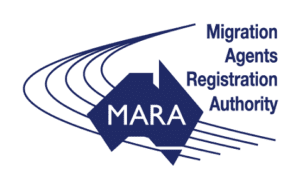

Registered with IRCC
![]()
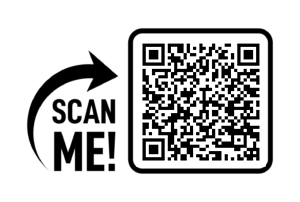
©2024. TVG Migration DMCC Copyright | All rights reserved by The Virmani Group


